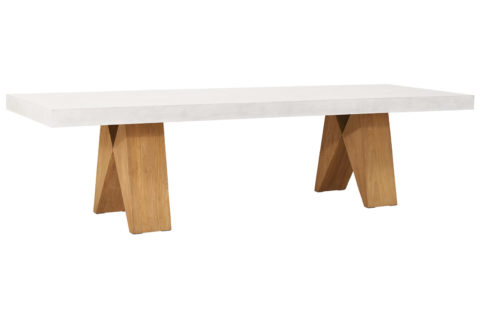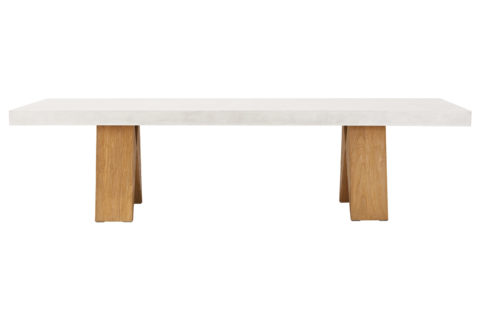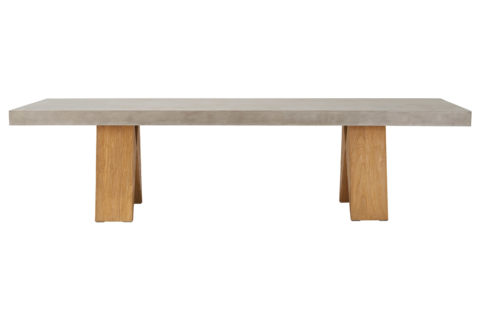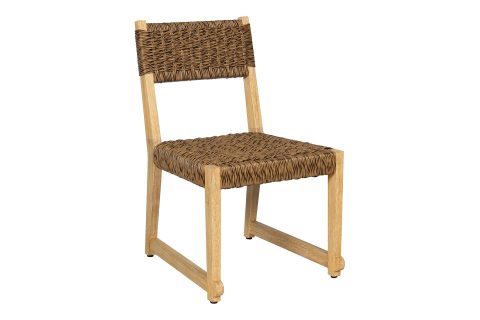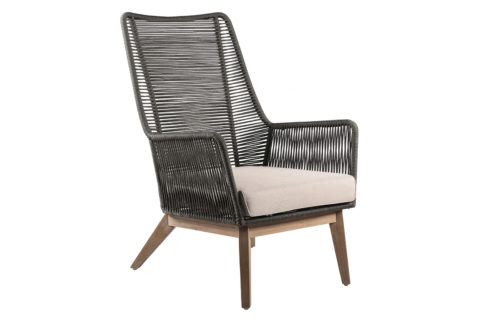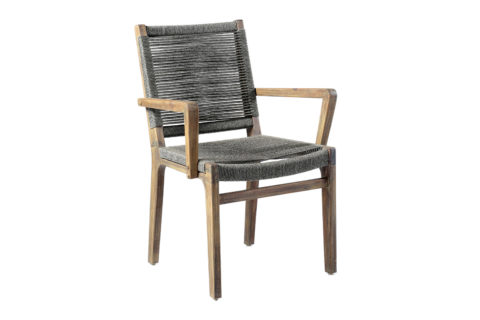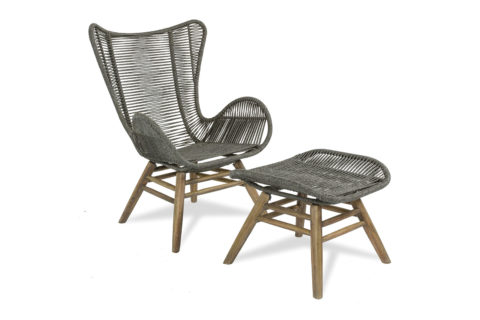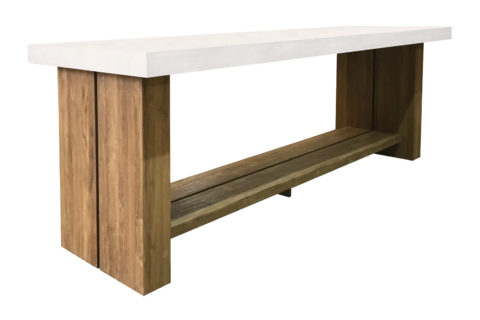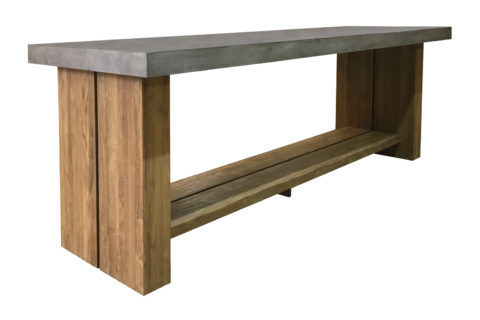Wood: Renewable and Reclaimable
Wood plays an important role in several Seasonal Living furniture collections. From use as a frame material to pieces that stand alone for their practicality and beauty, wood is a renewable and reclaimable resource.
Raw Elements
Eucalyptus
The Eucalyptus genus includes 700 different species of shrubs and trees that are native to Australia. Plantation-grown Eucalyptus is the world’s most planted hardwood tree, with Brazil being the top producer and exporter of eucalyptus roundwood and pulp.
Eucalyptus has a rapid rate of growth, making it highly sustainable and more affordable than woods that were traditionally used in making indoor furniture, such as oak, teak, and mahogany. A eucalyptus plantation can produce 30 times the volume of lumber per hectare per year compared to an unmanaged temperate forest. It has a high strength-to-weight ratio and a hardness rating similar to hickory, hard maple, and beech, making it extremely durable for outdoor use. The wood naturally has a high oil content, making it resistant to decay, rot, and insects—especially when it receives proper care. In appearance, plantation-grown eucalyptus has a grain that is straight, even and moderately coarse with a rich pink color.
Teak
Teak—Tectona Grandis—is a tropical hardwood tree species native to south and southeast Asia. Today it is also cultivated in countries in Africa and the Caribbean. For thousands of years, the wood’s high oil content, high tensile strength, and tight grain made it the wood of choice for everything from building ships and bridges to doors, window frames, columns, and beams.
Depletion of old-growth teak forests has led to creation of commercial teak plantations, as well as to the use of reclaimed teak wood. Teak is increasingly salvaged from houses, decks, commercial buildings, and other structures. Reclaimed teak features natural knots as well as manmade characteristics—such as notches—that testify to different craft and other uses.
Seasonal Living sources reclaimed teak from islands in the Indonesian archipelago. Factories re-mill each piece to deliver rich hues ranging from muted golds and coppers to warm tans and browns. The wood might also contain small nail holes, added joints, and small cracks from many years of previous use. As such, every piece of reclaimed teak is unique.
Manufacturing
From a manufacturing point of view, plantation-grown eucalyptus and teak have similar properties. Eucalyptus has good machining and turning properties. It glues and holds fasteners well and sands to a smooth surface. With a fairly close grain, it can be finished with water and solution-based lacquers, pigments, oil, and wax. Like all woods, Eucalyptus will naturally patina over time. Always be sure to follow specific care instructions to understand wood’s natural properties or environmental responses.
Teak has high resistance to rot and termites and high durability. The wood can be easily cut and worked with fine detail. For outdoor use, teak does not require a finish, and it weathers to a pleasing gray color. All natural wood expands and contracts according to humidity levels. In dry atmospheric conditions, sometimes spacing around joints will appear more pronounced. When more humid conditions return, the wood expands slowly. Over time, the reclaimed teak will “silver” as its decades-old surfaces are exposed to sunlight and other natural elements.
Sustainability
Reclaimed teak has many more years of useful life.
The use of reclaimed teak for furniture helps preserve old-growth teak forests.
Countries of Origin
Indonesia
